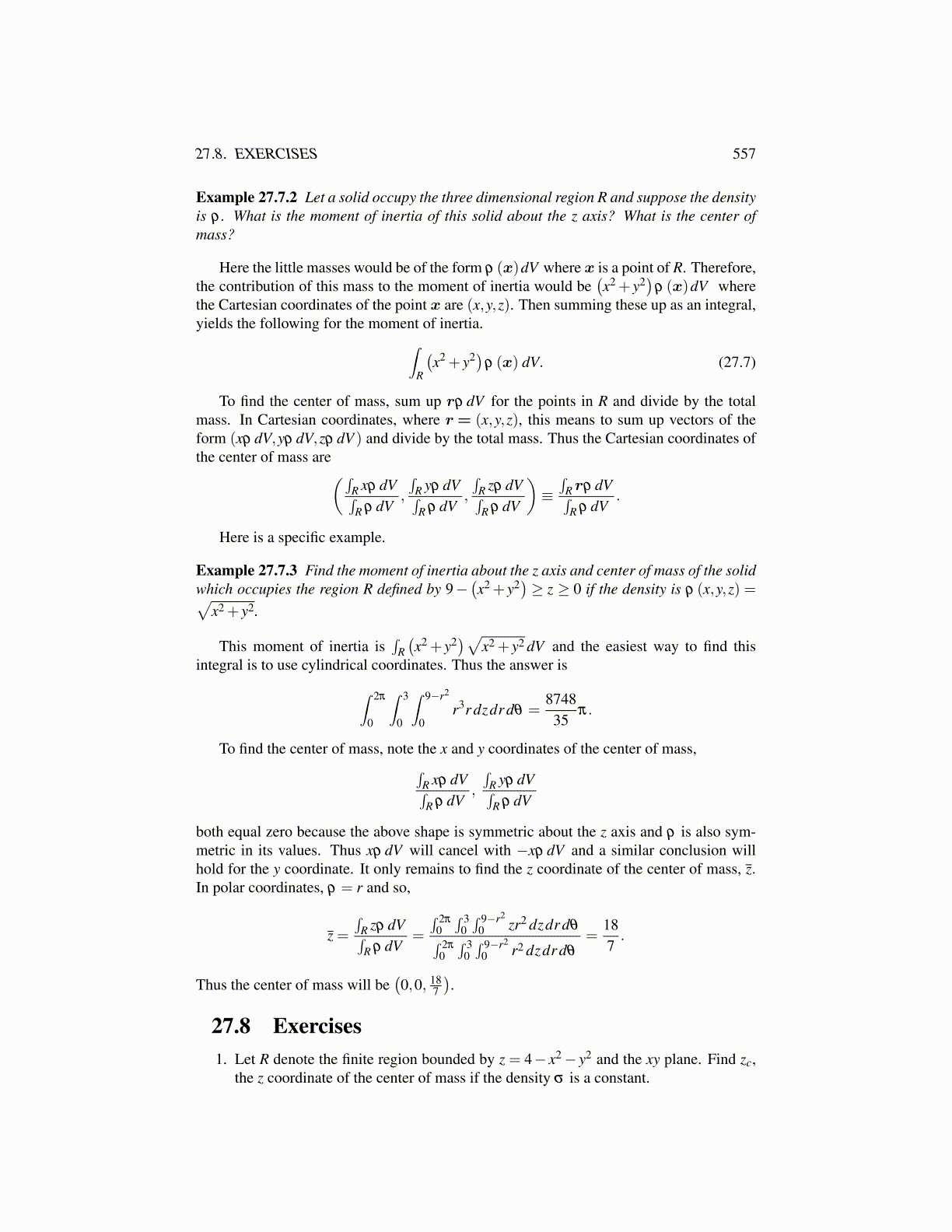
Chapter 28
The Integral on SurfacesA parametric surface is the image of a vector valued function of two variables. Earlier,vector valued functions of one variable were considered in the study of space curves. Herethere are two independent variables. This is why the result could be expected to be asurface. For example, you could have
r (s, t) =(
x y z)=(
s+ t cos(s)sin(s) ts)
for (s, t) ∈ (0,1)× (0,1). Each value of (s, t) gives a point on this surface. The surfaceis smooth if all the component functions are C1 and rs ×rt (s, t) ̸= 0. This last conditionassures the existence of a well defined normal vector to the surface, namely rs ×rt (s, t).Recall from the material on space curves that rt ,rs are both tangent to curves which lie inthis surface. If this cross product were 0, you would get points or creases in the surface.
28.1 The Two Dimensional Area in R3
Consider a function defined on a two dimensional surface. Imagine taking the value ofthis function at a point, multiplying this value by the area of an infinitesimal chunk of arealocated at this point and then adding these together. The only difference is that now youneed a two dimensional chunk of area rather than one dimensional.
Definition 28.1.1 Let u1,u2 be vectors in R3. The 2 dimensional parallelogramdetermined by these vectors will be denoted by P(u1,u2) and it is defined as
P(u1,u2)≡
{2
∑j=1
s ju j : s j ∈ [0,1]
}.
Then the area of this parallelogram is
area P(u1,u2)≡ |u1 ×u2|= det(G)1/2
where Gi j ≡ ui ·u j.
To see the last claim,
|u1 ×u2|2 = |u1|2 |u2|2 sin2 (θ) = |u1|2 |u2|2(1− cos2 (θ)
)= |u1|2 |u2|2 − (u1 ·u2)
2 = det(G)2
Suppose then that x= f (u) where u ∈ U , a subset of R2 and x is a point in V , asubset of 3 dimensional space. Thus, letting the Cartesian coordinates of x be given byx = (x1,x2,x3)
T , each xi being a function of u, an infinitesimal rectangle located at u0corresponds to an infinitesimal parallelogram located at f (u0) which is determined by the
2 vectors{
∂f(u0)∂ui
dui
}2
i=1, each of which is tangent to the surface defined by x= f (u).
(No sum on the repeated index.)
557